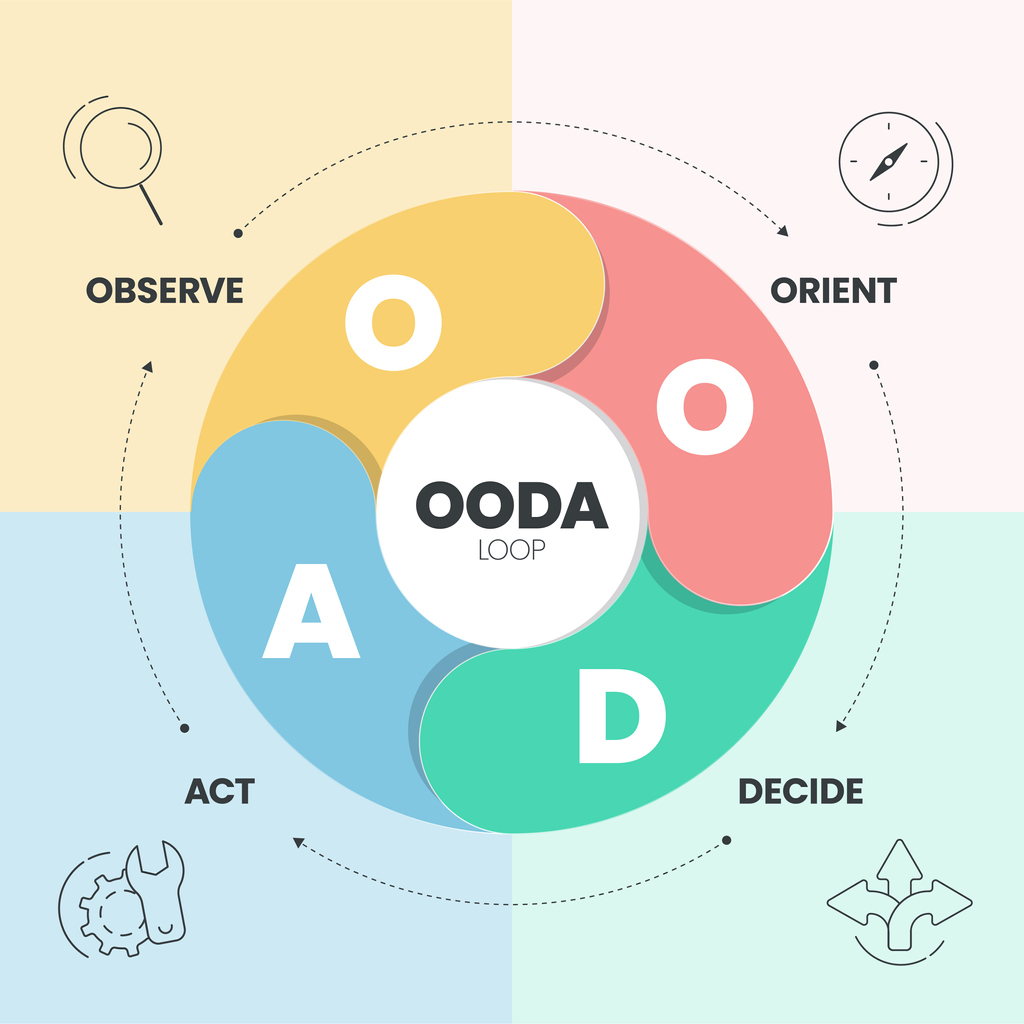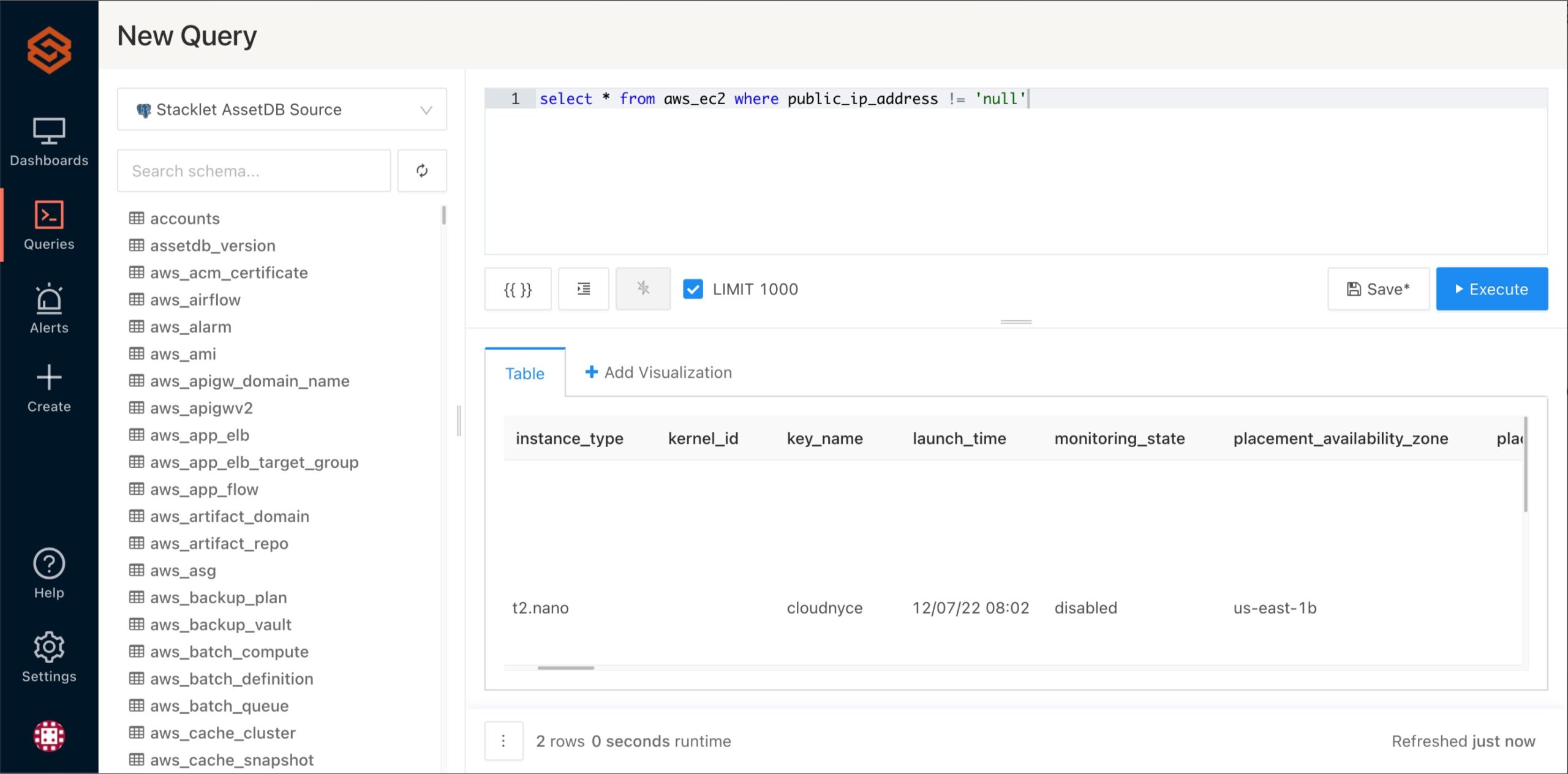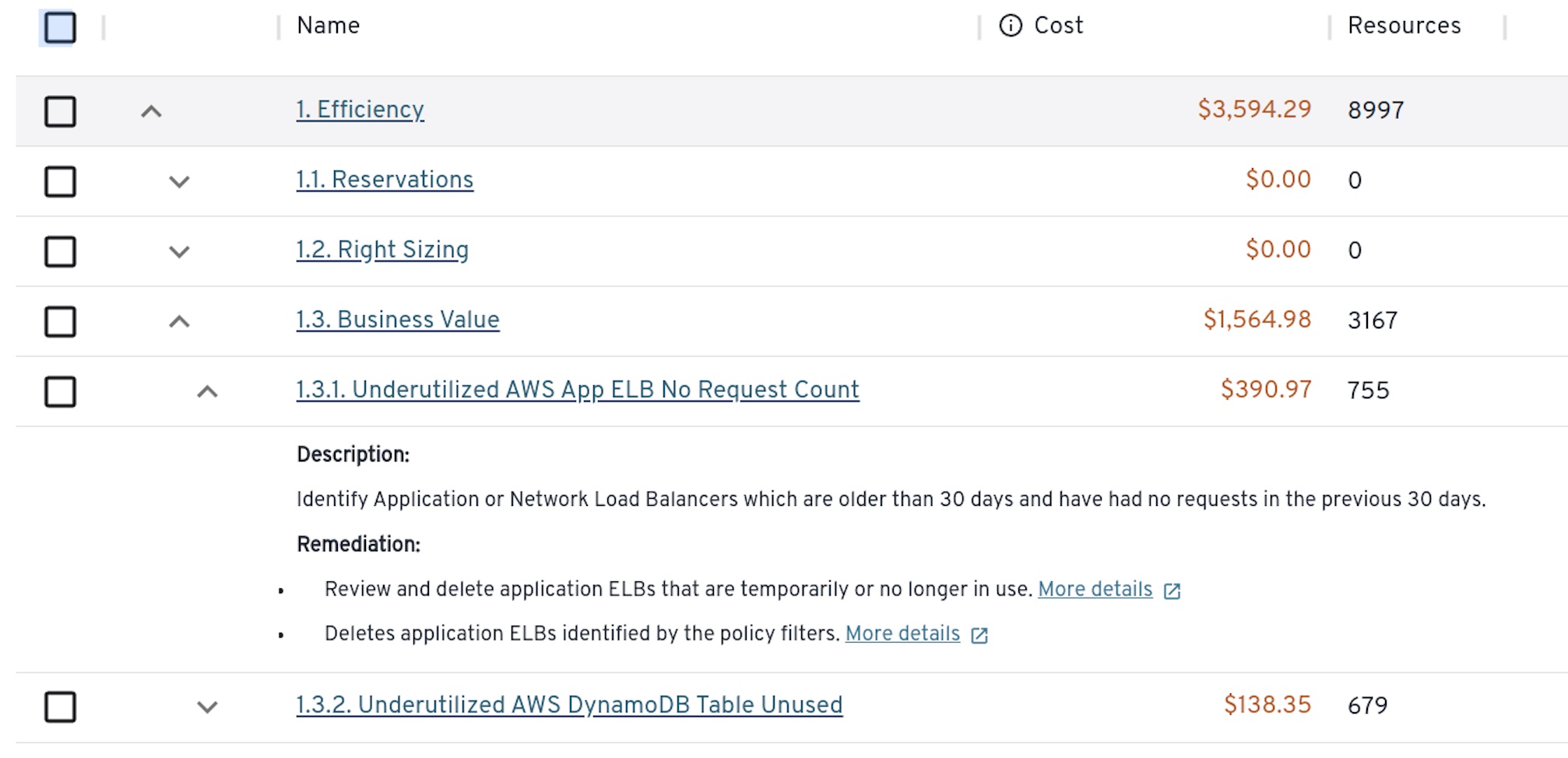Around the “Cloud OODA Loop” With Stacklet
“In Silicon Valley, the OODA loop of your decision-making is effectively what differentiates your ability to succeed.” – Reid Hoffman,

The OODA loop is a decision-making model that was first developed by US Air Force Colonel John Boyd in the 1950s. It stands for “observe, orient, decide, and act.” Decision-makers should constantly cycle through these four steps in order to make effective decisions in complex and rapidly changing environments.
The public cloud, particularly as deployed in mid-to-large size companies, is the epitome of a complex and rapidly changing environment! So how do you – in your quest to improve security, reduce costs, or a range of other objectives – optimize your own decision-making about the cloud? As the OODA loop dictates, you start by observing so you can identify the problems most important for your company to solve.
Of course, we all know how hard this is to do in practice. Your cloud is made up of resources across the world and across platforms. You have thousands or millions of these in all shapes and sizes, existing for years or just minutes until they are deleted or replaced. Most tools only show you a slice based on their own limitations or biases. You might see only some resource types, or reports can be pre-filtered through the lens of a specific use case (such as security or performance management).
At Stacklet, we take a different approach to the important work of Observing. We know that, as platform or cloud engineers in the center of everything, you want the most comprehensive possible view of your cloud. Every Stacklet implementation starts with setting up our proprietary cloud asset database (Stacklet AssetDB). Stacklet AssetDB provides a centralized, real-time repository for all your cloud assets, including compute instances, storage volumes, network components, and databases across all major cloud platforms. Think of Stacklet AssetDB as your dream Cloud CMDB that can keep up with the ever-changing and dynamic cloud – at lower cost to boot!
With Stacklet AssetDB up and running, you and your developers can use Stacklet-provided SQL queries or write your own to easily discover answers to such diverse questions as:
- How many EC2 instances do we have by account and instance type?
- What are our top-ten most expensive cloud resource types?
- Who are our most active cloud operators across all accounts?
- And so on…

Sample Query Screen in Stacklet
The answers to these questions may be critical to company cost or security concerns, or they might be deepening your understanding of your cloud inventory. You can use Stacklet’s provided BI tooling or plug Stacklet AssetDB into your own.
But even given the Observability you can get from ad-hoc Stacklet AssetDB queries, you and your managers will still want to understand where you stand in relation to your cloud governance goals. You likely want a power-up to get started on your trip around the OODA loop. This is where you can realize the full benefit of Stacklet governance as code.
Stacklet provides you with policy-driven, out-of-the-box analysis of cloud governance posture across commonly-accepted use cases. Want to know how far your company is from being CIS compliant? What else does your team need to do to achieve SOC2? How much money did each team waste last month on unattached EBS volumes?

Sample Cost Compliance Dashboard in Stacklet
As soon as you start using Stacklet, we give you the answers to these questions and more. That extensive observability is just the beginning. Dig right into the human-readable policies driving our analysis, and tweak these to provide more customized analysis. Investigate the data we collect for you down to all account and resource details. Get started today notifying your stakeholders about the problems they need to fix. And use this same policy-driven approach to make the required changes to achieve better governance, in full collaboration with your development teams.
In our next post, we’ll dive into these and other next steps in your OODA loop: using Stacklet iteratively to Orient, Decide and Act towards improving your cloud.
Categories
- Cloud Asset Database
- stacklet platform

